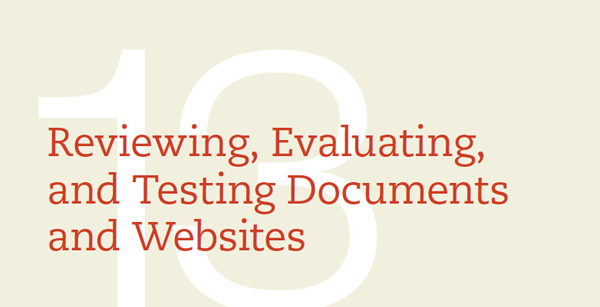13 Reviewing, Evaluating, and Testing Documents and Websites
Printed Page 340-341

This chapter focuses on techniques for improving the usability of documents and websites. In technical communication, usability refers to how easily a person can use a document, site, or software program to carry out a task. In other words, usability measures how successfully a document achieves its purpose and meets its audience’s needs. More specifically, usability refers to five factors related to a person’s use of the item (Nielsen, 2012):
- Ease of learning: the time it takes a person to learn to use the item
- Efficiency of use: the time it takes a person to carry out a task after learning how to do it
- Memorability: a person’s ability to remember how to carry out a task
- Error frequency, severity, and recovery: the number and severity of errors a person makes in carrying out a task, and the ease with which a person recovers from these errors
- Subjective satisfaction: how much a person likes (or dislikes) carrying out the task
